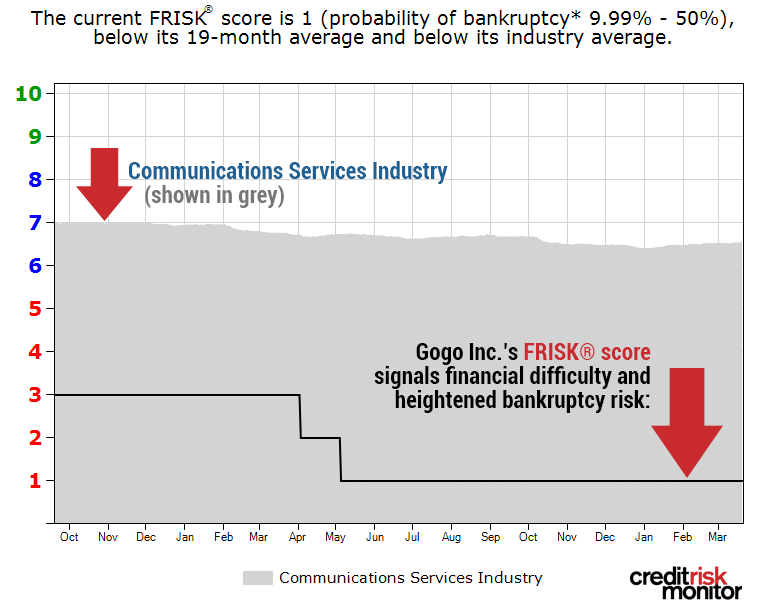In-flight WiFi provider Gogo Inc. is in danger of being grounded by a steep year-over-year cash balance decline and the inability to generate any positive returns.
Seemingly the only game in town for internet surfing at 35,000 feet on most major American airlines, Gogo Inc.'s FRISK® score nose dived to a rock-bottom "1" in spring 2018 and has not gained altitude. The FRISK® score is 96% accurate in gauging U.S. public company bankruptcy risk within 12 months. See the regression:

This High Risk Report will take a scrutinous look at Gogo Inc.'s recent performance and explains in greater detail why the FRISK® score is so bearish on the Chicago-based communications company.
Download the free report to learn more.
Ready to learn more?
Our FRISK® score model incorporates four powerful risk inputs:
- “Merton”-type model of stock market capitalization and volatility
- Financial ratios, including those used in the Altman Z”-Score Model
- Bond agency ratings from Fitch, Moody's, and DBRS Morningstar
- Website click pattern data from CreditRiskMonitor® subscribers, representing key credit decision-makers at more than 35% of current Fortune 1000 companies plus thousands of other large companies worldwide
Since the start of 2017, the FRISK® score’s rate of success in capturing public company bankruptcy is 96%. In any given year, you can count on one hand the times we miss – and in those outlier cases, the circumstances deal with unusual, unforeseen events such as natural disasters and CEO fraud.
Download the free report to learn more.
About High Risk Reports
Our High Risk Reports feature companies that are exhibiting a significantly high level of financial distress, as indicated by our proprietary FRISK® score.
The reports highlight the factors that have pushed a company's score lower on the "1" (worst) to "10" (best) FRISK® score, which is 96% accurate in predicting bankruptcy over a 12-month period. The High Risk Reports also includes analysis on financial indicators such as the company’s DBT index, stock performance, financial ratios and how it is performing relative to its industry peers.
The ultimate goal of the High Risk Report series is two-part: provide an early warning for those doing business with an increasingly distressed company and inform of the many signals that should be examined when assessing financial risks.